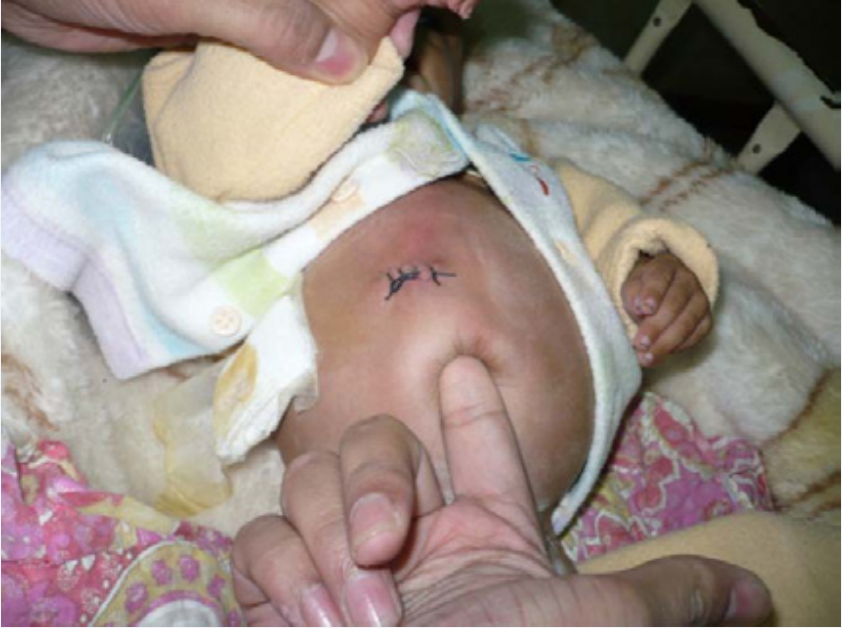Trans-Umbilical Hernia Finger Sweep Maneuver
- 1. Department of Pediatric and Neonatal Surgery, The Children’s Hospital and the Institute of Child Health, Pakistan
CITATION
Mirza B (2016) Trans-Umbilical Hernia Finger Sweep Maneuver. J Surg Transplant Sci 4(1): 1022.
DEAR EDITOR
Umbilicus is a frequent site of abdominal access in laparoscopic and robotic surgery. Curved incisions are placed around umbilicus to undertake various abdominal procedures for cosmetic intensions [1]. Umbilical hernia is a weakness in the umbilical fascia of anterior abdominal wall through which abdominal contents protrude out into the umbilicus [2]. After reduction of the hernial contents, the umbilicus can be invaginated into the abdominal cavity by inserting a finger into the umbilical ring. A trans-umbilical hernia finger sweep maneuver is being described here in a postoperative case of hydrocephalus.
A 20-day old neonate, a case of myelomeningocele and hydrocephalus, was referred to our department for postoperative intestinal obstruction/ ileus after 48 hours of ventriculo-peritoneal (VP) shunt for hydrocephalus. On examination, abdomen was distended with a reducible umbilical hernia. The incision site on abdomen was healthy. No mass was palpable. Rectal stimulation did not yield anything. Keeping the possibility of small bowel being stuck on the underside of wound in mind (previously, a similar case developed postoperative intestinal obstruction after VP shunt surgery found to have a loop of ileum stuck and kinked at the peritoneal side of the surgical wound), I introduced my index finger through the umbilical hernia into the abdominal cavity in an effort to the palpate if any loop of bowel was stuck there (Figure 1).
Figure 1: Demonstration of transumbilical hernial finger sweep maneuver.
There was a feeling of some tissue attached to the peritoneal side of the wound which detached on finger sweep. No mass was felt on trans-umbilical hernial finger palpation. Abdominal radiograph showed dilated small bowel shadows. Surprisingly, the patient passed stool after 5 minutes of trans-umbilical hernial finger maneuver. The abdominal distension settled gradually over few hours and patient was discharged after further 48 hours on establishing full oral feeds.
Usually the patients with VP shunting are discharged the day after shunt placement as no significant manipulation of abdominal viscera is needed during shunt placement. Intestinal obstruction during early postoperative period after VP shunting may be attributed to ileus with or without peritoneal irritation in case of infected CSF draining into the peritoneal cavity. The CSF however in the index case was clear before shunt insertion. True fibrous adhesions are not developed in very early postoperative period but soft adhesions or kinks may form. In the index case, trans-umbilical hernial finger sweep might have resolved the condition by detaching a loop of small bowel being stuck and kinked on the undersurface of the wound. The other possibility could be detachment of omentum being stuck on the undersurface of wound and compressing a loop of bowel. A tissue was felt on finger palpation attached to the under surface of the wound, the nature of which cannot be commented on with surety. The third possibility could be direct compression and stimulation of the transverse colon by the finger resulting in bowel movement. I suggest a large umbilical hernia when present can provide a better opportunity to directly palpate abdominal viscera or a palpable pathology or access abdomen [3].
Best Regards,
Bilal Mirza*
Department of Pediatric and Neonatal Surgery, The Children’s Hospital and the Institute of Child Health, Pakistan










































































































































